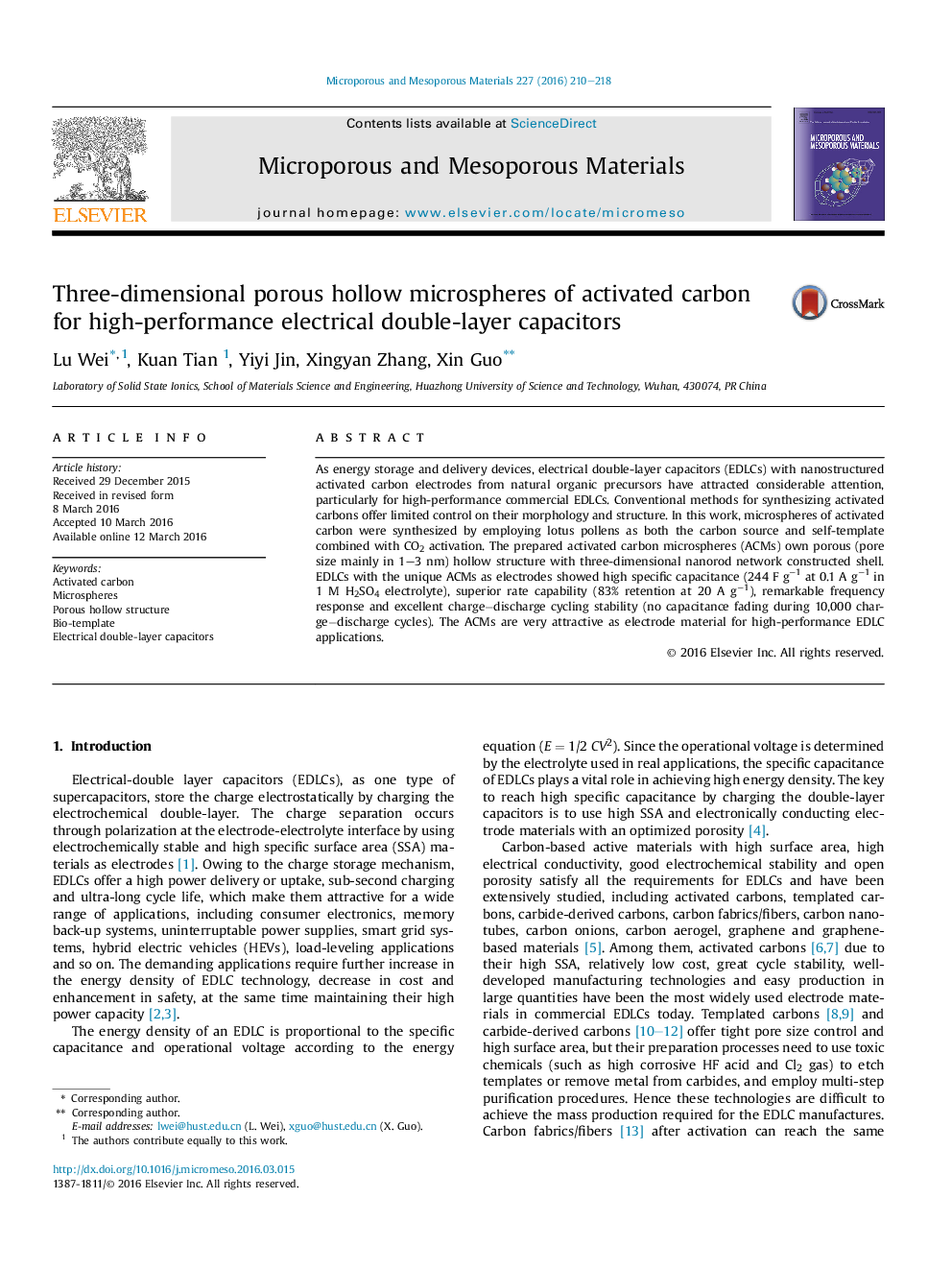| Article ID | Journal | Published Year | Pages | File Type |
|---|---|---|---|---|
| 72154 | Microporous and Mesoporous Materials | 2016 | 9 Pages |
•Activated carbon microspheres (ACMs) are fabricated using lotus pollens as templates.•ACMs preserve the hierarchically porous hollow structure with micro/mesopores.•ACMs exhibit excellent electrochemical performances for supercapacitors.•The superior capacitance properties depend on the morphology and porosity of ACMs.
As energy storage and delivery devices, electrical double-layer capacitors (EDLCs) with nanostructured activated carbon electrodes from natural organic precursors have attracted considerable attention, particularly for high-performance commercial EDLCs. Conventional methods for synthesizing activated carbons offer limited control on their morphology and structure. In this work, microspheres of activated carbon were synthesized by employing lotus pollens as both the carbon source and self-template combined with CO2 activation. The prepared activated carbon microspheres (ACMs) own porous (pore size mainly in 1–3 nm) hollow structure with three-dimensional nanorod network constructed shell. EDLCs with the unique ACMs as electrodes showed high specific capacitance (244 F g−1 at 0.1 A g−1 in 1 M H2SO4 electrolyte), superior rate capability (83% retention at 20 A g−1), remarkable frequency response and excellent charge−discharge cycling stability (no capacitance fading during 10,000 charge−discharge cycles). The ACMs are very attractive as electrode material for high-performance EDLC applications.
Graphical abstractFigure optionsDownload full-size imageDownload as PowerPoint slide
